How Much of Ryan Murphy's Hollywood Is Based in Truth?
The early days of Hollywood are often romanticized, but the era wasn’t perfect by any measure. Diversity wasn’t as readily accepted as it is today — people of color were discriminated against and shut out of major productions, or otherwise given tokenized roles. The LGBT community existed in the shadows.
And while it was important to Ryan Murphy to share this side of history in his newest Netflix series, Hollywood, he also sought to create (as per Netflix), “a world where women and gay people and people of color could flourish.” In doing so, he and co-creator Ian Brennan re-wrote some of the stories of real-life actors and industry personalities. Read on below to see how Hollywood adapted the stories of some of the industry’s most prominent figures.
Hollywood spoilers below.
Anna May Wong (Michelle Krusiec)
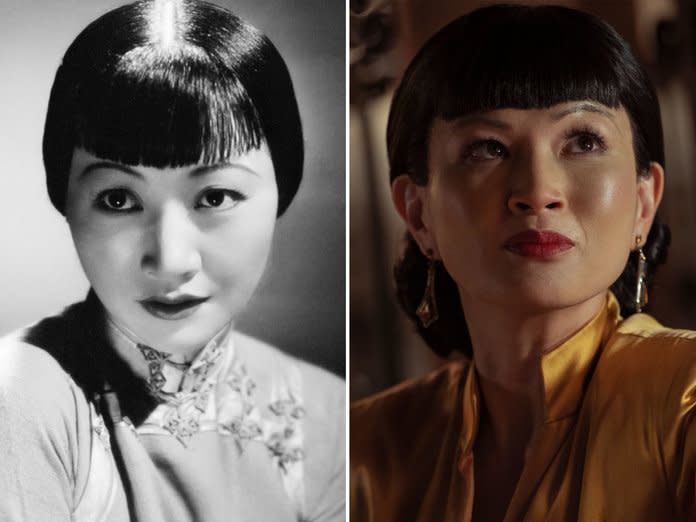
Wong was a Chinese-American actress who rose to prominence in the silent era. Of course, being of Asian descent, she was pigeonholed in a series of stereotypical roles (“Lotus Blossom,” “Lotus Flower,” “Mandarin’s Sweetheart”). Frustrated by her treatment in America, Wong moved to Europe in the late ‘20s and starred in several films abroad. A few years after she returned to America, Wong went out for the role of O-Lan in a film adaptation of Pearl Buck’s Nobel Prize-winning novel about struggling Chinese farmers, The Good Earth. Due in part by the anti-miscegenation laws of the time, she was ultimately passed over for a white woman, Luise Rainer, who won an Oscar for her performance in the film.
Wong’s heartbreak over losing the role to Rainer is depicted in episode 2 of Hollywood. In the show, Wong goes on to win an Oscar for her performance in Meg (the fictionalized film which grounds most of the plot development in Hollywood). Wong never won an Oscar in real life. As referenced briefly in the show, the actress had a drinking problem and suffered from cirrhosis of the liver — she died of a heart attack in 1961, at 56 years old.
Rock Hudson (Jake Picking)
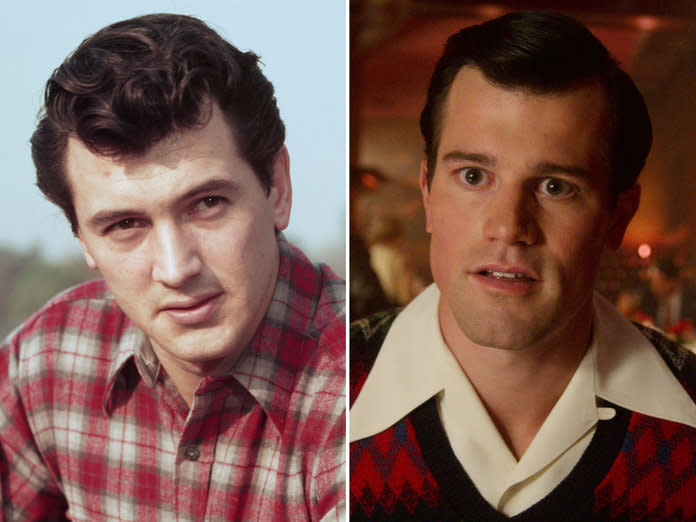
Hudson’s Hollywood arc begins before he adopts his stage name, back when he was best known as Roy Harold Scherer Jr. His agent, Henry Willson, gave Scherer the name Rock Hudson when he signed with him in 1947. Hudson’s disastrous screentest for Meg, in which he flubs the lines time after time, appears to be based on the rumor that it took him 38 takes to get his only line in 1948 film Fighter Squadron correct.
Though Hudson takes his relationship with (the fictional) Archie Coleman public at the end of the series, in real life the actor was never fully out of the closet. Hudson’s homosexuality was considered an “open secret” in the industry, but Willson worked tirelessly to conceal it from the press. Willson set Hudson up with women to publicly date through the years, including dancer Vera-Ellen. In 1954, Willson reportedly arranged for his secretary, Phyllis Gates, to date and eventually marry Hudson. There are conflicting reports as to whether Gates knew about Hudson’s sexuality during their relationship. The marriage was short-lived — by 1958 Hudson and Gates’s divorce was finalized.
In July of 1985, Hudson’s publicist confirmed that the actor had been diagnosed with AIDS a year prior, making Hudson the first major celebrity to publicly share his diagnosis. Still, Hudson’s sexuality remained undisclosed. At the time, his publicist reported, “He doesn't have any idea now how he contracted AIDS. Nobody around him has AIDS.'' Just two months later, Hudson died from complications related to the virus — he was 59 years old.
Henry Willson (Jim Parsons)
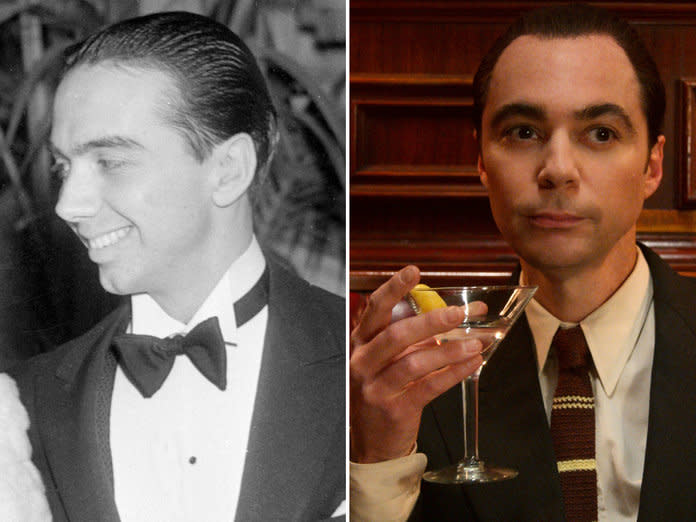
Willson was, as portrayed in Hollywood, infamous among industry insiders, as he was rumored to demand sexual favors from his male clients in exchange for representation. Further, Willson reportedly resorted to illegal measures when it came to keeping his clients’ sexual preferences from the public. In Hollywood, Willson is shown bribing a man at dinner, an exchange that leads to a reporter for so-called Tattletale Magazine being accosted by several men and beaten on the street. Willson was rumored to employ off-duty LAPD officers to scare off blackmailers — there are even rumors of mob intervention. In 1955, Willson reportedly traded gossip about one of his clients (Rory Calhoun) to Confidential magazine in exchange for backing off a story about Hudson’s homosexuality.
Hollywood gives Willson a redemptive arc he did not see in real life. After being fired by Hudson (an event that wouldn’t happen for nearly two decades), Willson apologizes for his bad behavior and vows to produce a gay love story for Ace Pictures starring Hudson and employing the rest of the team behind Meg.
In real life, Willson had become known to represent a mainly homosexual clientele — a reputation that eventually destroyed his profitability. He died broke, of cirrhosis, at a retirement community for industry alums in 1978. He was 67 years old.
Vivien Leigh (Katie McGuinness)
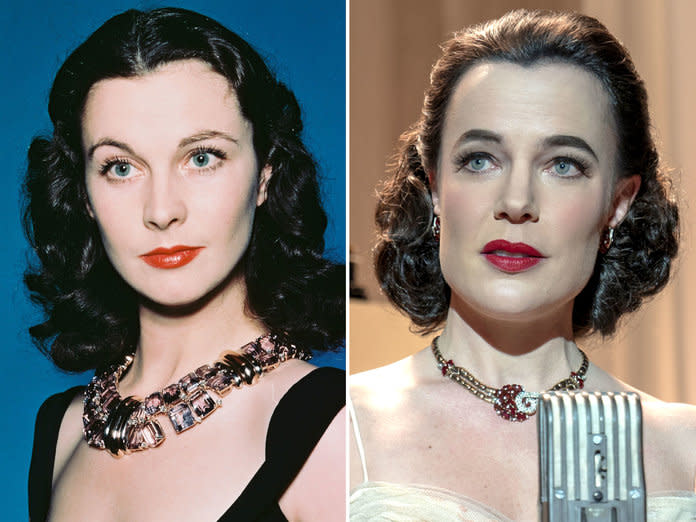
In Hollywood, Leigh is having an affair with Ernie (Dylan McDermott) — this would have happened while she was still married to Laurence Olivier. Allusions to Leigh’s bipolar disorder are made — she’s shown manically organizing her jewelry on the bed, her odd behavior described as “a case of the trembles.”
RELATED: Normal People’s Marianne and Connell are the R-Rated Ross and Rachel of Our Generation
Eleanor Roosevelt (Harriet Sansom Harris)
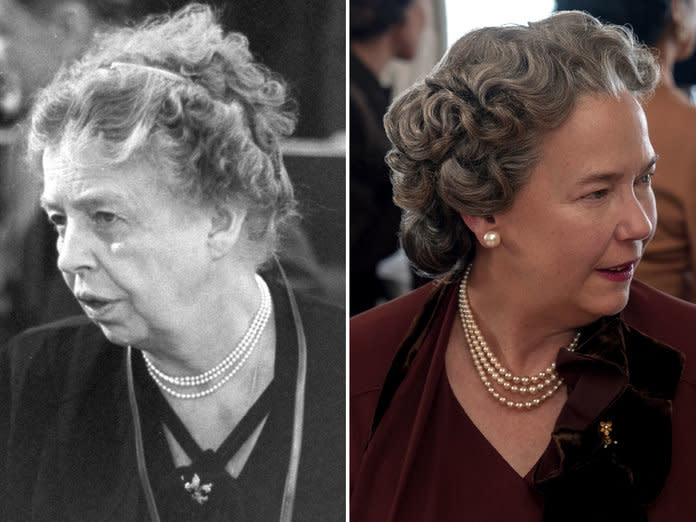
The former First Lady makes a brief appearance in episode 4, in which she encourages Avis Amberg (Patti LuPone) to cast Camille Washington (Laura Harrier) in Meg. Roosevelt was a longtime civil rights advocate. It was around this point in time that she chaired the drafting committee for The Universal Declaration of Human Rights.
In Hollywood, Roosevelt excuses herself from a meeting at Ace Pictures by explaining that she’s “meeting with Hick” for dinner. “Hick” was the nickname given to journalist Lorena Hickok, whom Roosevelt was rumored to have engaged in a relationship with in the ‘30s. While the sexual aspect of their relationship reportedly concluded in 1938, Roosevelt and Hickok remained friends through their remaining decades.
Hattie McDaniel (Queen Latifah)
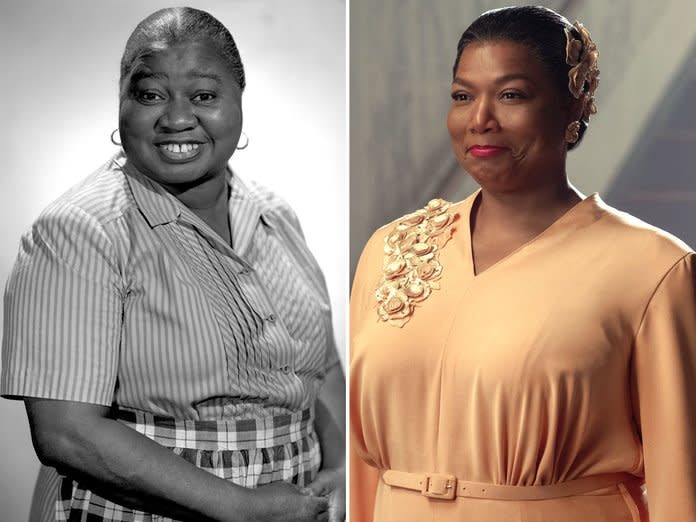
In McDaniel’s first appearance in Hollywood (episode 5), the actress is shown kissing a male prostitute and then actress Tallulah Bankhead. McDaniel and Bankhead were both rumored to be members of Hollywood’s “Sewing Circle” — an underground society of women in the industry who carried on affairs with other women. Despite her alleged inclusion in this group, McDaniel was married to four different men throughout her life.
As recounted in the series, McDaniel won an Oscar in 1939 for her performance as the maid, Mammy, in Gone with the Wind. She was the first person of color to ever win an Oscar. It would be another 51 years before a woman of color (Whoopi Goldberg, Ghost) would again win an Oscar in an acting category.
The 1939 ceremony was held at The Ambassador Hotel, which upheld a “strict no-blacks policy” at the time (and would continue to do so until 1959). Gone with the Wind’s producer, David O. Selznick (the likeness of whom McDermott, as Ernie, portrays in Hollywood’s Meg), reportedly called in a favor for McDaniel to be allowed in the building. Instead of sitting at the film’s table alongside her cast, she was relegated to a separate table along the venue’s far wall.
Hollywood describes the moment a bit differently — insinuating that McDaniel was allowed entry into the hotel only moments before her name was called to accept her award.
McDaniel died from breast cancer in 1952 when she was 57 years old. She had laid out specific plans for her burial in her will, requesting a plot at the Hollywood Cemetery (later renamed the Hollywood Forever Cemetery). At the time of her death, the cemetery was “whites-only” — decades later, in 1999, McDaniel received a marble memorial tribute at Hollywood Forever.

